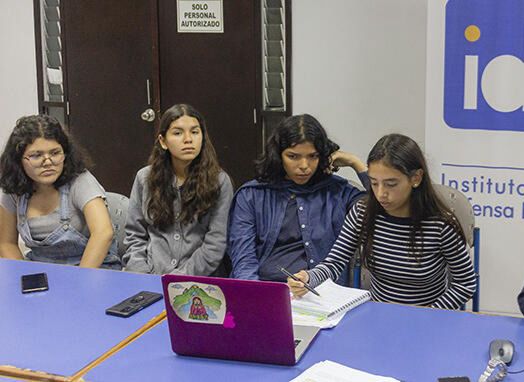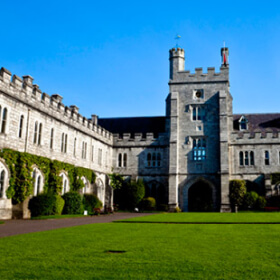Blog
When Children Sue: My Journey for Climate Justice in Peru

Emilia, member of our Young Advisory Team, reflects on her journey as climate activist and litigator in a climate lawsuit against the Peruvian State.
It was March 15, 2017; summer in Peru. I had just started 5th grade. I came home from school and I saw her on the news, covered in mud, emerging from thick, dirty water.
Her name was Evangelina Chamorro[1]. She had been swept away by a huaico, a violent mudslide triggered by El Niño, a recurring, climate phenomenon. I remember asking myself, why does this happen? And, if we already know El Niño returns every year, why does the government keep failing to prevent its devastating effects?
Those questions led me to where I am today; a youth litigator in a climate lawsuit against the Peruvian State, fighting to stop deforestation, one of the main drivers of global warming and, therefore, a factor that intensifies El Niño’s consequences.
But along my journey, I’ve faced several obstacles.
The first is Peru’s political crisis. As Uruguayan writer Eduardo Galeano once said: Los latinoamericanos somos pobres porque es rico el suelo que pisamos1. My country is one of the most biodiverse in the world, yet extractivism drives policy decisions. Our government legislates for corporate interests, prioritizing (their) profit over environmental protection. This has led to harmful policies and harsh realities, including:
- The amendment to the Forestry and Wildlife Law (2024): weakens deforestation restrictions, threatening as well indigenous lands.[2]
- Our tragic record of murdered environmental defenders: 58 killed between 2012 and 2023.[3]
But beyond politics, I’ve faced another challenge: not being taken seriously.
I joined this lawsuit in 2019. Now, in 2025, I can say with certainty that Peru’s justice system is not built for children. We are often dismissed, like in a past hearing when a government lawyer called our case a mere “school project.” Or in media coverage of our first press conference, where adults in the comments assumed we were being manipulated, as if children couldn’t possibly understand what is at stake.
But they do. Children understood when they lost their homes to a huaico. When they went days without water due to scarcity. When floods washed away roads, keeping them from school.
No child wakes up one day wanting to sue their own state. But when those in charge are failing us, the question arises: Who will act? My answer was simple: me. And for me, this lawsuit has been a six-year commitment. It has meant becoming deeply aware of the failures of our political, justice, and economic systems at just 11 years old.
But it has also meant gaining something invaluable: friends (also known as fellow plaintiffs) who stand by my side at every hearing; amazing lawyers who guide us; and incredible people worldwide, like those in the Youth Climate Justice Project at University College Cork.
Recently, the latter brought me to speak about my experience at a virtual event hosted by King’s College London. Almost at the end, someone asked: If you could do everything again, would you? After telling the room about the obstacles young climate activists face and the reality of my country’s climate situation, my answer was clear. I said yes.
Absolutely yes.
References
[1] Collyns, D. (2017, June 20). Lima's time bomb: how mudslides threaten the world's great 'self-built' city. The Guardian. https://www.theguardian.com/cities/2017/jun/20/living-time-bomb-lima-flash-floods-peru-mudslides
[2] Gabay, A. (2024, February 9). Critics decry controversial bill that loosens deforestation restrictions in Peru. Mongabay. https://news.mongabay.com/2024/02/critics-decry-controversial-bill-that-loosens-deforestation-restrictions-in-peru/
[3] Global Witness. (2024, September 10). Missing voices: The violent erasure of land and environmental defenders. Global Witness. Retrieved March 12, 2025, from https://globalwitness.org/en/campaigns/land-and-environmental-defenders/missing-voices/

